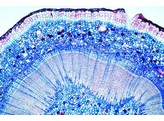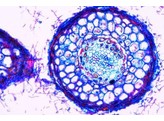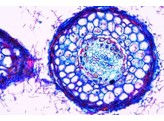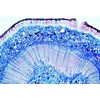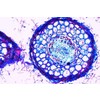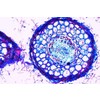Microscope slide set from our environment III, the soil. 17 different slides showing more about life in the soil.
Set contains the following preparations:
Soil bacteria - from acidic soil
Nitrite soil bacteria - Generates harmful nitrogen compounds
Ectotrophic mycorrhiza - Here the fungal threads penetrate into the intercellular spaces and thus not into the cells of the plant root
Endotrophic mycorrhiza - In this case the fungal filaments penetrate into the plant root cells
Nitrogen-fixing bacteria - in symbiosis with lupine root, cross section
Rotting leaves - Marbling and humus formation
Wild mustard, stem, cross section
Soil bacteria - Bacillus megaterium, spore forming bacterium
Fungus in wood root, root tip, cross section
Intact cell layer as indicator of clean air
Xerocomus - mushroom (boletus)
Dune grass- planted as protection against erosion, cross section
Lumbricus - earthworm; improves the soil, cross section
Collembola - springtails; helps to turn leaf litter into compost, lives in the soil
Forest soil
Humus or topsoil
Acidified earth
Set contains the following preparations:
Soil bacteria - from acidic soil
Nitrite soil bacteria - Generates harmful nitrogen compounds
Ectotrophic mycorrhiza - Here the fungal threads penetrate into the intercellular spaces and thus not into the cells of the plant root
Endotrophic mycorrhiza - In this case the fungal filaments penetrate into the plant root cells
Nitrogen-fixing bacteria - in symbiosis with lupine root, cross section
Rotting leaves - Marbling and humus formation
Wild mustard, stem, cross section
Soil bacteria - Bacillus megaterium, spore forming bacterium
Fungus in wood root, root tip, cross section
Intact cell layer as indicator of clean air
Xerocomus - mushroom (boletus)
Dune grass- planted as protection against erosion, cross section
Lumbricus - earthworm; improves the soil, cross section
Collembola - springtails; helps to turn leaf litter into compost, lives in the soil
Forest soil
Humus or topsoil
Acidified earth
Properties
- F079112


